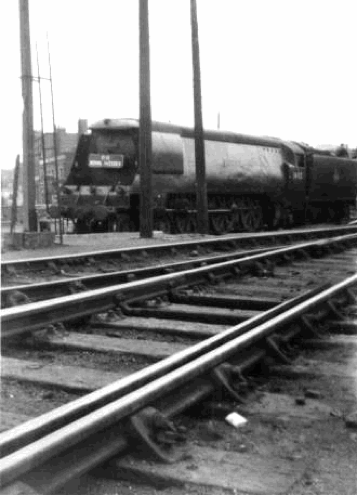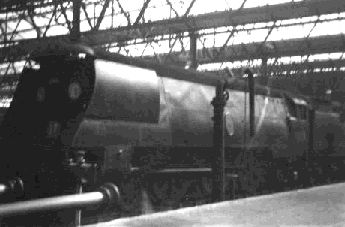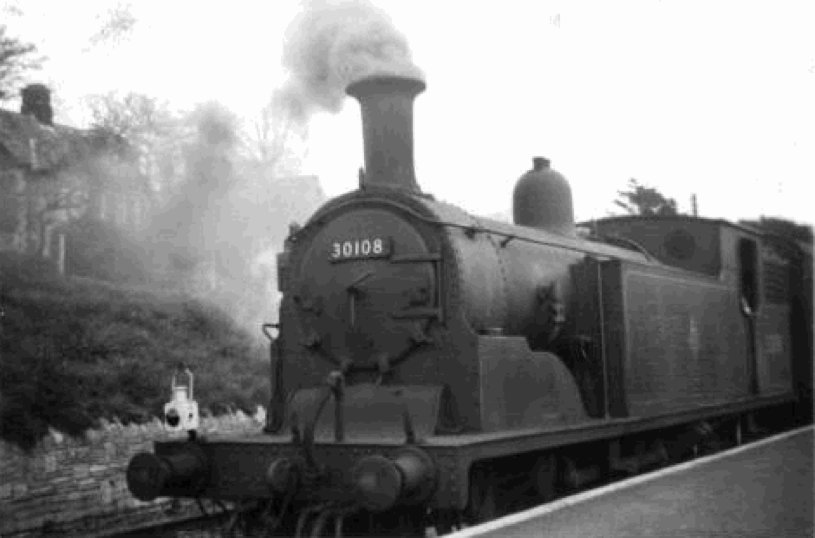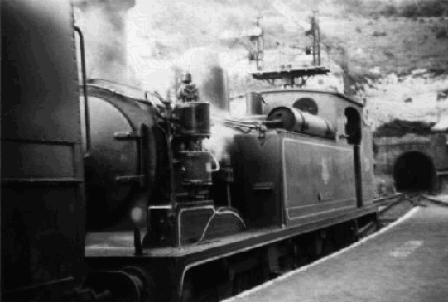
We always went by train, of course; nearly everyone did. And Saturday to Saturday, just like everyone did (see Summer Saturdays GWR). It was so exciting, especially the long, foreign trips on "The Cambrian Coast Express" from Paddington to Barmouth, double headed from Shrewsbury by a couple of "Dukedogs", (see Barmouth page) or a "Manor" and a 43XX. Or to Swanage on the Atlantic Coast Express, or Lyme Regis, or Tintagel (nearest station Camelford) or the Isle of Wight (electric to Portsmouth, paddle steamer to Ryde, then steam to Bembridge, or Ventnor).

Trips to the South Coast, or Cornwall, were from Waterloo on the Southern Region. West Country Pacific No. 34102 Lapford leaves Nine Elms shed on a rather grey Saturday in 1958, ready to haul "The Royal Wessex". This must have been on the occasion when one of my friends’ Dad got us a shed pass, as otherwise Nine Elms was notoriously difficult to get into.

Actually, not a bad shot for a box Brownie under an overall roof with just an average sort of film. Battle of Britain Class no. 34065 Hurricane stands at the rather impressive hydraulic buffer stops at Waterloo. We had travelled home behind this loco at the end of a summer holiday, at Swanage I think, and would either have changed at Wareham or had our carriages attached to the rear of the through train.


This is O2 no 24 0-4-4T of the Isle of Wight Railway, at Ventnor, late 50s. Ventnor station track layout fanned out from the single track tunnel that you see in the background, via the three-way point that is also visible. There was either a turntable or traverser at the terminal end of the platforms.